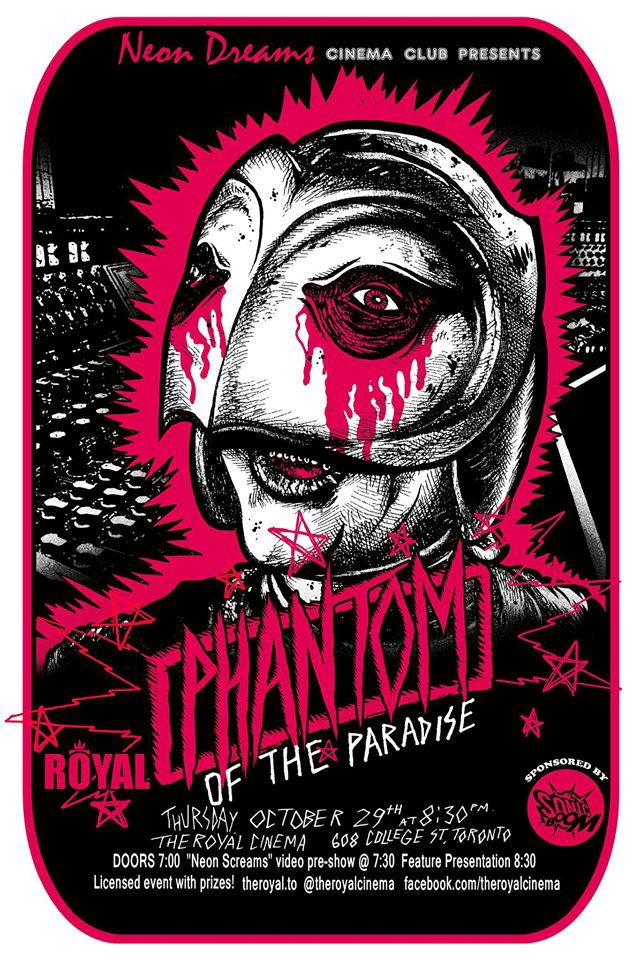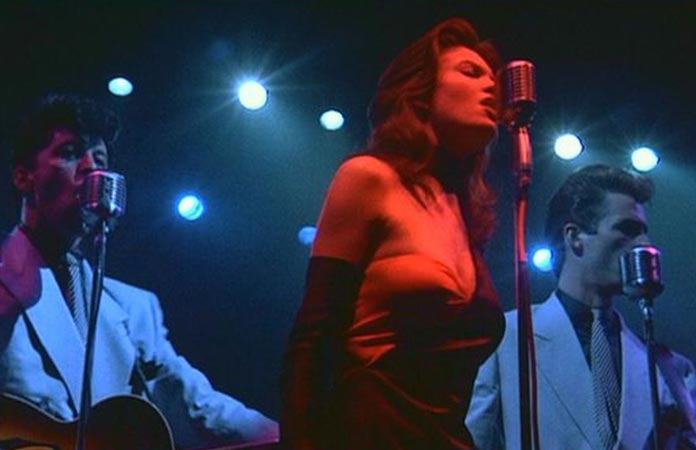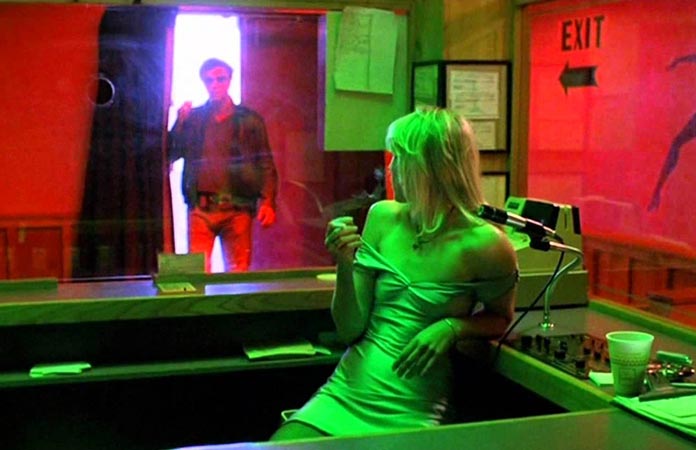Neon Dreams Will Bring Your Neo-Noir Fantasies To Life
Published on October 5th, 2015 in: Canadian Content, Culture Shock, Current Faves, Interviews, Movies |If you live in the Toronto area and you love movies, you might already know about The Royal Theatre on College Street. But did you know that every month, programmer Brendan Ross takes over The Royal for one night devoted to the best of neo-noir cinema from the 1970s, 1980s, and beyond? Featuring such classics as Body Double, Risky Business, To Live and Die in L.A., and Streets Of Fire, Ross’s Neon Dreams Cinema Club is one of the city’s best kept cinematic secrets.
My first Neon Dreams experience was To Live and Die In L.A., William Friedkin’s 1985 film starring William L. Petersen, John Pankow, and Willem Dafoe. I’d never seen the film before, but I certainly knew of its legendary car chase scene and of course, its killer soundtrack by Wang Chung. It’s also iconic for what is perhaps the best movie trailer of all time.
It was a pretty fantastic introduction to Neon Dreams and now the film is burned into my brain forever, along with certain parts of William L. Petersen’s anatomy (but more on that later). Body Double and Streets of Fire were two films I’d seen before but when I watched them as part of Neon Dreams, they were not only far better than I remembered, they were also infinitely more amazing when viewed with an enthusiastic audience.
Rather than just programming films for Neon Dreams, however, Ross turns the evening into an event, screening the best and/or most bizarre music videos and commercials from the 1980s before the movie begins. It’s kind of like when I was 14 and would stay up all night with my friends watching videos and movies like Rock & Rule on Night Flight. But Neon Dreams is better because it’s in a theater and you can purchase alcoholic beverages. (Also, your mom won’t come downstairs halfway through the movie and yell at you for staying up all night.)
I talked to Brendan a bit about the genesis of Neon Dreams and here’s what he had to say.
What are the specific stylistic conventions of the films in Neon Dreams that make a theatrical viewing experience so unique?
Bright neon lights. Next question.
OK you probably have some kind of word count so I GUESS I can elaborate.
I guess for me personally my favorite cinema-going experiences have always involved movies that light up the screen with excessive amounts of sight and sound. And even more than the surreal landscapes, dreamy synth sounds, and ultra-cool dialogue, I think it’s the specific attitude they have and emotions they evoke that makes them so special.
You previously mentioned that the Neon Dream programme is “ballsy.” Can we talk about the dong action in some of these films?
Haha! When I said we are showcasing “ballsy” movies, I definitely meant that in more ways than one. Thanks for picking up on it. And that’s definitely one of the things I love most about these movies. They can simultaneously be both outrageously macho and fabulously homoerotic!
We also live in a sad time where very few actors are going full-dong in contemporary action/thriller movies, and it’s a real shame. I don’t care how big your TV at home is, seeing William L. Petersen’s wiener on The Royal’s 50 foot screen is an experience unequivocal to all others.
How important do you think the soundtracks were to these kinds of movies?
Chances are, if it doesn’t have a soundtrack I would listen to on its own it isn’t going to be a Neon Dreams title. The accompanying soundtracks are completely vital to the mood and tone of these films. I can’t even imagine what To Live and Die In L.A. would be like without Wang Chung’s pulse-pounding soundtrack, or Pino Donaggio’s overbearingly beautiful score for Body Double that provides that perfect juxtaposition of class meets trash that makes the movie so wonderfully odd. And don’t even get me started on Tangerine Dream! Seriously. Let’s move on or we’ll be here all day.
What was the movie that inspired you to start this programme?
The one that stands out the most would be Streets of Fire. I remember the first time I watched it. By myself. On my old 27″ TV. Obviously I enjoyed the hell out it, you’d have to be inhuman not to, but I also knew that this is not the way it should be seen and that I would never truly appreciate it until I watched it on a giant screen with giant sound accompanied by 100+ other cheering freaks. And you know what? I was right.
Are there any films you’d really like to screen but haven’t been able to acquire yet?
Trying to get me to reveal future screenings? Nice try.
To be honest though, no! So far every movie I’ve wanted to play I’ve been able to with no roadblocks by distributors or anyone else. Everybody involved in the process, most of all the terrific people at The Royal have been amazingly supportive of the series and the films within. I’m sure down the line when I start digging into more obscure titles I might run into rights issues, but for now everything is cotton candy.
The next Neon Dreams screening will be The Phantom of the Paradise on Thursday, October 29 during which the event will be temporarily renamed Neon Screams. You can purchase advance tickets here. Check out the amazing poster designed exclusively for this event by Patrick Carson Sparrow. For more information on Neon Dreams, be sure to follow the Neon Dreams Cinema Club Facebook page.



Time limit is exhausted. Please reload the CAPTCHA.